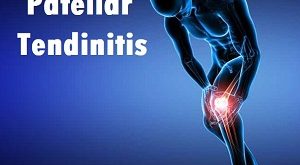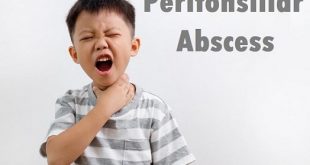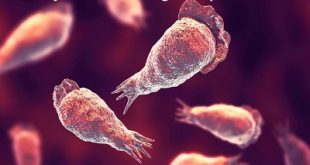Description – Post-Traumatic Stress Disorder
Post traumatic stress disorder (PTSD), once called shell shock or battle fatigue syndrome is a serious condition that can develop after a person has experienced or witnessed a traumatic or terrifying event in which serious physical harm occurred or was threatened. PTSD is a lasting consequence of traumatic ordeals that cause intense fear, helplessness, or horrors, such as a sexual or physical assault, the unexpected death of a loved one, an accident, war, or natural disaster. Families of victims can also develop PTSD, as can emergency personnel and rescue workers.
Most people who experience a traumatic event will have reactions that may include shock, anger, nervousness, fear, and even guilt. These reactions are common, and for most people, they go away over time. For a person with PTSD, however, these feelings continue and even increase, becoming so strong that they keep the person from living a normal life. People with PTSD have symptoms for longer than one month and cannot function as well as before the event occurred.
Are there different types of PTSD?
If you are given a diagnosis of PTSD, you might be told that you have mild, moderate or severe PTSD. This explains what sort of impact your symptoms are having on you currently – it’s not a description of how frightening or upsetting your experiences might have been.
PTSD may be described differently in some situations:
- Delayed-onset PTSD – if your symptoms emerge more than six months after experiencing trauma, this might be described as ‘delayed PTSD’ or ‘delayed-onset PTSD’.
- Complex PTSD – if you experienced trauma at an early age or it lasted for a long time, you might be given a diagnosis of ‘complex PTSD’. (See our page on complex PTSD for more information.)
- Birth trauma – PTSD that develops after a traumatic experience of childbirth is also known as ‘birth trauma’. (See our page on PTSD and birth trauma for more information.)
If you experience some PTSD symptoms while supporting someone close to you who’s experienced trauma, this is sometimes known as ‘secondary trauma’.
Causes of PTSD
Post-traumatic stress disorder (PTSD) can develop after a very stressful, frightening or distressing event, or after a prolonged traumatic experience.
Types of events that can lead to PTSD include:
- Serious accidents
- Physical or sexual assault
- Abuse, including childhood or domestic abuse
- Exposure to traumatic events at work, including remote exposure
- Serious health problems, such as being admitted to intensive care
- Childbirth experiences, such as losing a baby
- War and conflict
- Torture
PTSD is not usually related to situations that are simply upsetting, such as divorce, job loss or failing exams.
PTSD develops in about 1 in 3 people who experience severe trauma.
It’s not fully understood why some people develop the condition while others do not.
But certain factors appear to make some people more likely to develop PTSD.
Risk factors for post-traumatic stress disorder
Anyone can develop PTSD at any age. This includes war veterans, children, and people who have been through a physical or sexual assault, abuse, accident, disaster, or other serious events. Not everyone with PTSD has been through a dangerous event. Some people develop PTSD after a friend or family member experiences danger or harm. The sudden, unexpected death of a loved one can also lead to PTSD.
Many factors play a part in whether a person will develop PTSD. Some examples are listed below. Risk factors make a person more likely to develop PTSD. Other factors, called resilience factors, can help reduce the risk of the disorder.
Some factors that increase the risk for PTSD include:
- Living through dangerous events and traumas
- Getting hurt
- Seeing another person hurt, or seeing a dead body
- Childhood trauma
- Feeling horror, helplessness, or extreme fear
- Having little or no social support after the event
- Dealing with extra stress after the event, such as loss of a loved one, pain and injury, or loss of a job or home
- Having a history of mental illness or substance abuse
Some factors that may promote recovery after trauma include:
- Seeking out support from other people, such as friends and family
- Finding a support group after a traumatic event
- Learning to feel good about one’s own actions in the face of danger
- Having a positive coping strategy, or a way of getting through the bad event and learning from it
- Being able to act and respond effectively despite feeling fear
Researchers are studying the importance of these and other risk and resilience factors, including genetics and neurobiology. With more research, someday it may be possible to predict who is likely to develop PTSD and to prevent it.
Signs and Symptoms of post traumatic stress disorder
Not every traumatized person develops ongoing (chronic) or even short-term (acute) PTSD. Not everyone with PTSD has been through a dangerous event. Some experiences, like the sudden, unexpected death of a loved one, can also cause PTSD. Symptoms usually begin early, within 3 months of the traumatic incident, but sometimes they begin years afterward. Symptoms must last more than a month and be severe enough to interfere with relationships or work to be considered PTSD.
Symptoms of PTSD fall into four categories. Specific symptoms can vary in severity.
- Intrusive thoughts such as repeated, involuntary memories; distressing dreams; or flashbacks of the traumatic event. Flashbacks may be so vivid that people feel they are re-living the traumatic experience or seeing it before their eyes.
- Avoiding reminders of the traumatic event may include avoiding people, places, activities, objects and situations that bring on distressing memories. People may try to avoid remembering or thinking about the traumatic event. They may resist talking about what happened or how they feel about it.
- Negative thoughts and feelings may include ongoing and distorted beliefs about oneself or others (e.g., “I am bad,” “No one can be trusted”); ongoing fear, horror, anger, guilt or shame; much less interest in activities previously enjoyed; or feeling detached or estranged from others.
- Arousal and reactive symptoms may include being irritable and having angry outbursts; behaving recklessly or in a self-destructive way; being easily startled, or having problems concentrating or sleeping.
Many people who are exposed to a traumatic event experience symptoms like those described above in the days following the event.
Complications of post traumatic stress disorder
PTSD can lead to some complications.
These include:
- Difficulty with work or relationships
- A higher risk of heart problems
- A greater chance of chronic disease
- A possibility of changes that affect the brain, including higher levels of the stress hormone cortisol and a decrease in the size of the hippocampus – a brain structure important in-memory processing and emotion
People with PTSD may have other health problems, such as depression, anxiety, personality disorder, or the misuse of substances such as alcohol or drugs.
Diagnosis and examinations
To diagnose post-traumatic stress disorder, your doctor will likely:
- Perform a physical exam to check for medical problems that may be causing your symptoms
- Do a psychological evaluation that includes a discussion of your signs and symptoms and the event or events that led up to them
- Use the criteria in the Diagnostic and Statistical Manual of Mental Disorders (DSM-5), published by the American Psychiatric Association
Diagnosis of PTSD requires exposure to an event that involved the actual or possible threat of death, violence or serious injury. Your exposure can happen in one or more of these ways:
- You directly experienced the traumatic event
- You witnessed, in person, the traumatic event occurring to others
- You learned someone close to you experienced or was threatened by the traumatic event
- You are repeatedly exposed to graphic details of traumatic events (for example, if you are a first responder to the scene of traumatic events)
- You may have PTSD if the problems you experience after this exposure continue for more than a month and cause significant problems in your ability to function in social and work settings and negatively impact relationships.
Treatment of post traumatic stress disorder
Treatment usually involves psychotherapy and counseling, medication, or a combination.
Options for psychotherapy will be specially tailored for managing trauma.
They include:
- Cognitive processing therapy (CPT): Also known as cognitive restructuring, the individual learns how to think about things in a new way. Mental imagery of the traumatic event may help them work through the trauma, to gain control of the fear and distress.
- Exposure therapy: Talking repeatedly about the event or confronting the cause of the fear in a safe and controlled environment may help the person feel they have more control over their thoughts and feelings. The effectiveness of this treatment has been questioned, however, and it must be carried out with care, or there may be a risk of worsening of the symptoms.
Medications
Some medications can be used to treat the symptoms of PTSD.
Selective serotonin reuptake inhibitors (SSRIs), such as paroxetine, are commonly used. SSRIs also help treat depression, anxiety and sleep problems, symptoms that are often linked to PTSD. There have been some reports that antidepressant medications can cause an increased risk of suicide in individuals under the age of 24.
Sometimes, benzodiazepines may be used to treat irritability, insomnia, and anxiety. However, the National Center for PTSD does not recommend these, because they do not treat the core symptoms and they can lead to dependency.
Experimental therapies
Research has suggested that the following therapies may help, but further evidence is needed to confirm their safety and effectiveness.
Eye movement desensitization and reprocessing (EMDR): Recalling the event while making a specific kind of side-to-side eye movement may help lower distress levels for people with PTSD. This allows the individual to have more positive emotions, behaviors, and thoughts.
MDMA: The pharmaceutical version of the recreational drug, ecstasy, may help people learn to deal with their memories more effectively by encouraging a feeling of safety. Scientists are currently researching this option.
Cortisone hormone therapy: One study has suggested that high-dose cortisol-based treatments could help reduce the risk of PTSD if given soon after a trauma occurs.
Computer games: Playing some computer games have been linked with fewer symptoms in some veterans with PTSD, according to a study published in 2017. However, the researchers do not recommend using computer games instead of regular therapy.
Self-help tips
Active coping is a key part of recovery. It enables a person to accept the impact of the event they have experienced, and take action to improve their situation.
The following can help achieve this:
Learning about PTSD and understanding that an ongoing response is normal and that recovery takes time
Accepting that healing does not necessarily mean forgetting, but gradually feeling less bothered by the symptoms and having confidence in the ability to cope with the bad memories
Other things that can help include:
- Finding someone to confide in
- Spending time with other people who know what has happened
- Letting people know what might trigger symptoms
- Breaking down tasks into smaller parts, to make them easier to prioritize and complete
- Doing some physical exercise, such as swimming, walking, or yoga
- Practicing relaxation, breathing, or meditation techniques
- Listening to quiet music or spending time in nature
- Understanding that it will take time for symptoms to go away
- Accepting that PTSD is not a sign of weakness but can happen to anyone
- Participating in enjoyable activities that can provide a distraction
A number of helplines and other facilities are available for people who are or who may be experiencing the symptoms of PTSD.
Prevention
After surviving a traumatic event, many people have PTSD-like symptoms at first, such as being unable to stop thinking about what’s happened. Fear, anxiety, anger, depression, guilt – all are common reactions to trauma. However, the majority of people exposed to trauma do not develop long-term post-traumatic stress disorder.
Getting timely help and support may prevent normal stress reactions from getting worse and developing into PTSD. This may mean turning to family and friends who will listen and offer comfort. It may mean seeking out a mental health professional for a brief course of therapy. Some people may also find it helpful to turn to their faith community.
Support from others also may help prevent you from turning to unhealthy coping methods, such as misuse of alcohol or drugs.
 Diseases Treatments Dictionary This is complete solution to read all diseases treatments Which covers Prevention, Causes, Symptoms, Medical Terms, Drugs, Prescription, Natural Remedies with cures and Treatments. Most of the common diseases were listed in names, split with categories.
Diseases Treatments Dictionary This is complete solution to read all diseases treatments Which covers Prevention, Causes, Symptoms, Medical Terms, Drugs, Prescription, Natural Remedies with cures and Treatments. Most of the common diseases were listed in names, split with categories.








super plentiful knowledge regard to psychological behaviour or disorders helpful
which method of treatment and relieved in this disease?
Psychological therapies used to treat people with PTSD.
-Cognitive behavioural therapy (CBT)
-Eye movement desensitisation and reprocessing (EMDR)
-Group therapy